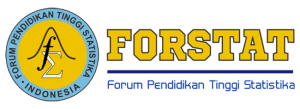Pengaruh Perkembangan Finansial terhadap Konvergensi Ekonomi di ASEAN: Pendekatan Data Panel Dinamis Tahun 2001-2016
DOI:
https://doi.org/10.34123/jurnalasks.v11i2.130Keywords:
konvergensi, perkembangan finansial, panel dinamis, FD-GMMAbstract
ASEAN merupakan salah satu perhimpunan negara-negara berpotensi ekonomi tinggi di dunia yang masih mengalami permasalahan disparitas perekonomian. Penelitian ini bertujuan untuk menggambarkan perkembangan finansial negara-negara ASEAN, mengidentifikasi adanya konvergensi regional pendapatan per kapita negara-negara ASEAN, dan pengaruh perkembangan finansial serta faktor-faktor yang memengaruhi pendapatan per kapita negara-negara ASEAN. Oleh karena itu, beberapa variabel dari sektor finansial ditambahkan sebagai variabel kontrol ke dalam model pertumbuhan ekonomi augmented Solow yang menjadi dasar penelitian ini. Hasil dari model teoritis yang diperoleh dari penelitian ini menunjukkan bahwa perkembangan finansial meningkatkan proses konvergensi. Model panel dinamis FD-GMM (First Different Generalized Method of Moment) yang digunakan dalam penelitian ini menunjukkan bahwa perkembangan finansial dapat mempercepat proses konvergensi perekonomian di antara negara-negara ASEAN karena memberikan pengaruh positif terhadap pertumbuhan ekonomi.















